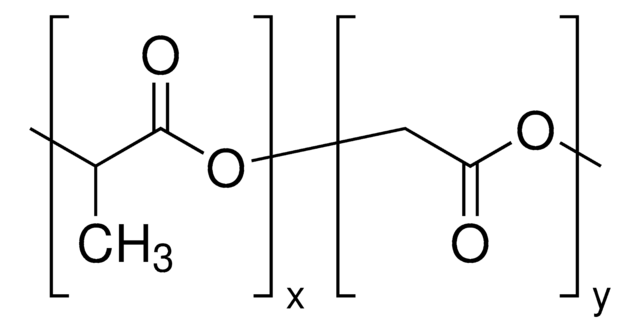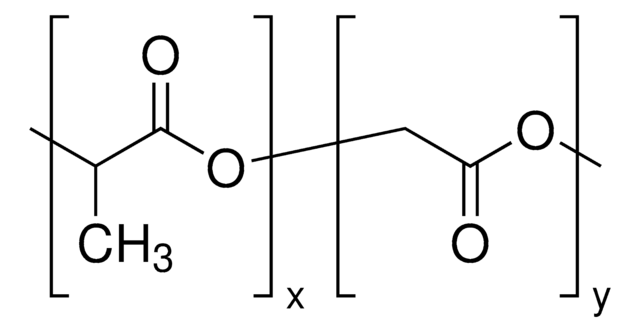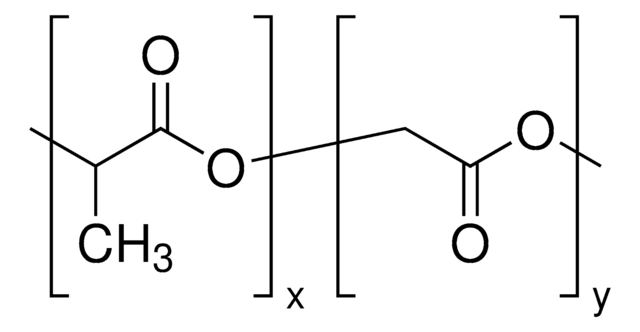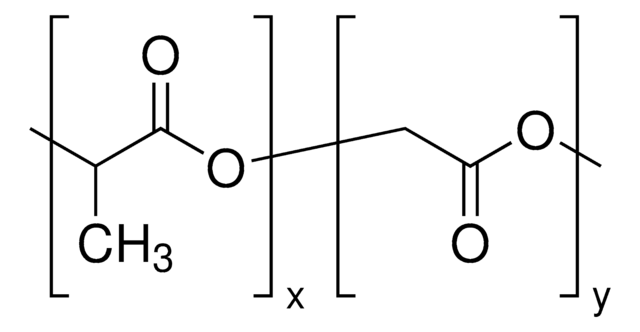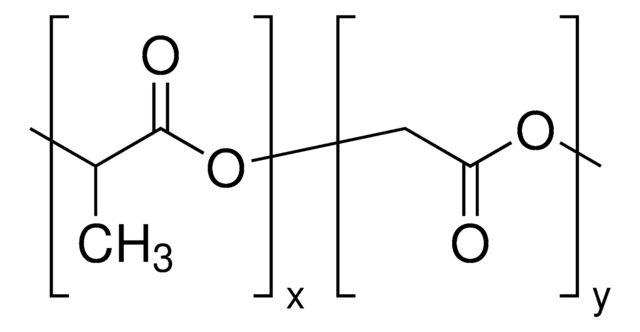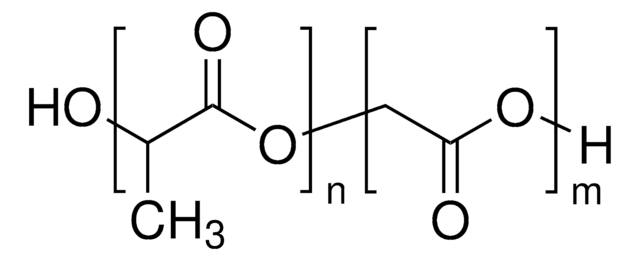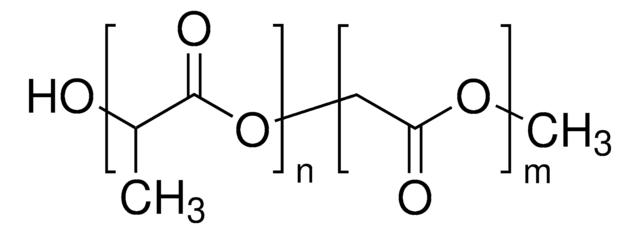719897
Resomer® RG 502 H, Poly(D,L-lactide-co-glycolide)
acid terminated, viscosity 0.16-0.24 dL/g
Sinónimos:
PLGA
About This Item
Productos recomendados
Quality Level
form
amorphous
feed ratio
lactide:glycolide 50:50
degradation timeframe
<3 months
viscosity
0.16-0.24 dL/g
transition temp
Tg 42-46 °C
storage temp.
2-8°C
InChI
1S/C6H8O4.C4H4O4/c1-3-5(7)10-4(2)6(8)9-3;5-3-1-7-4(6)2-8-3/h3-4H,1-2H3;1-2H2
InChI key
LCSKNASZPVZHEG-UHFFFAOYSA-N
Application
- In the formulation ofa non-aqueous drug delivery system for H2S donors to aid thesustained release of the drug.
- To prepare a polymer blend containing Ganciclovir-loaded microspheresdispersed in PLGA–PEG–PLGA polymer gel. This formulation can be used as asustained delivery system for Ganciclovir drug.
Legal Information
Related product
Storage Class
11 - Combustible Solids
wgk_germany
WGK 3
flash_point_f
Not applicable
flash_point_c
Not applicable
Elija entre una de las versiones más recientes:
¿Ya tiene este producto?
Encuentre la documentación para los productos que ha comprado recientemente en la Biblioteca de documentos.
Los clientes también vieron
Artículos
The world of commercial biomaterials has stagnated over the past 30 years as few materials have successfully transitioned from the bench to clinical use. Synthetic aliphatic polyesters have continued to dominate the field of resorbable biomaterials due to their long history and track record of approval with the U.S. Food and Drug Administration (FDA).
Aliphatic polyesters such as polylactide, poly(lactide-co-glycolide) and polycaprolactone, as well as their copolymers, represent a diverse family of synthetic biodegradable polymers that have been widely explored for medical uses and are commercially available.
Aliphatic polyesters such as polylactide, poly(lactide-co-glycolide) and polycaprolactone, as well as their copolymers, represent a diverse family of synthetic biodegradable polymers that have been widely explored for medical uses and are commercially available.
In the past two decades, tissue engineering and regenerative medicine have become important interdisciplinary fields that span biology, chemistry, engineering, and medicine.
Contenido relacionado
Interest in utilizing biodegradable polymers for biomedical applications has grown since the 1960s.
Nuestro equipo de científicos tiene experiencia en todas las áreas de investigación: Ciencias de la vida, Ciencia de los materiales, Síntesis química, Cromatografía, Analítica y muchas otras.
Póngase en contacto con el Servicio técnico
